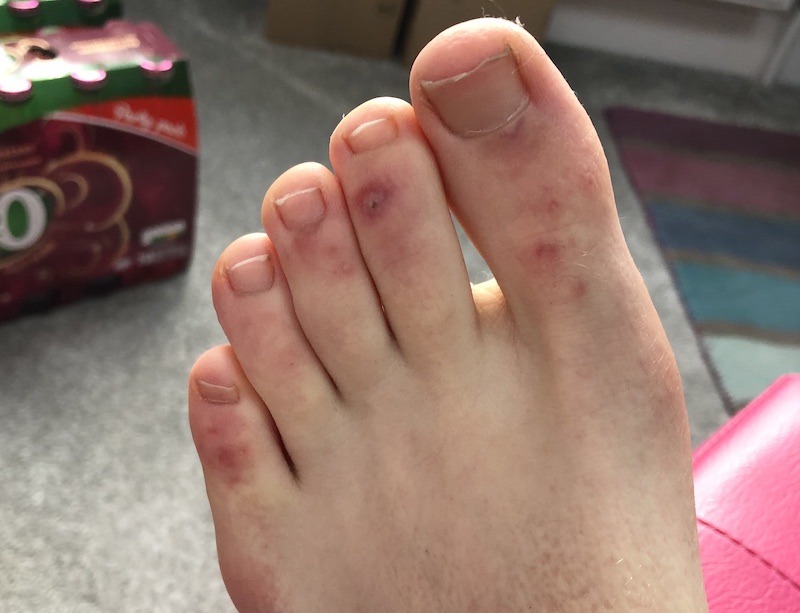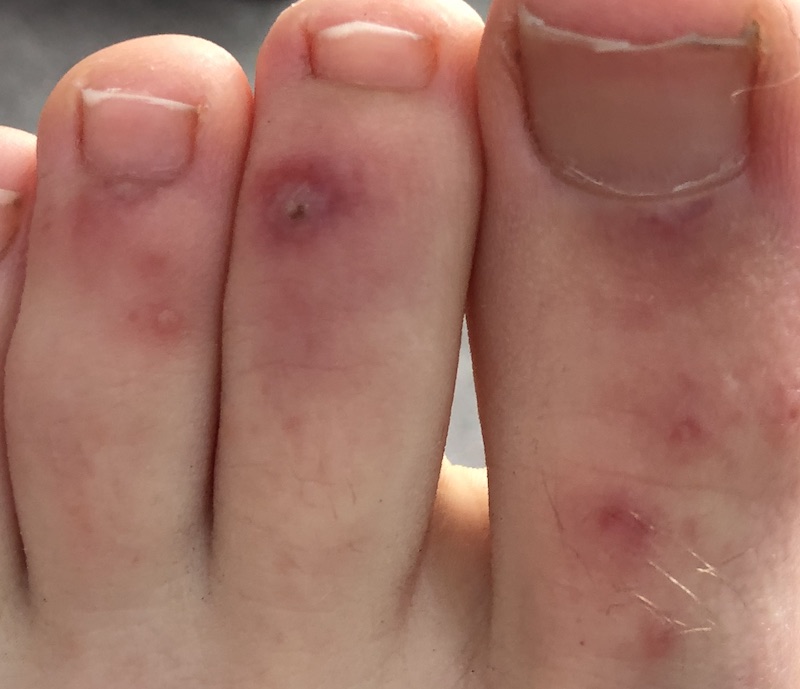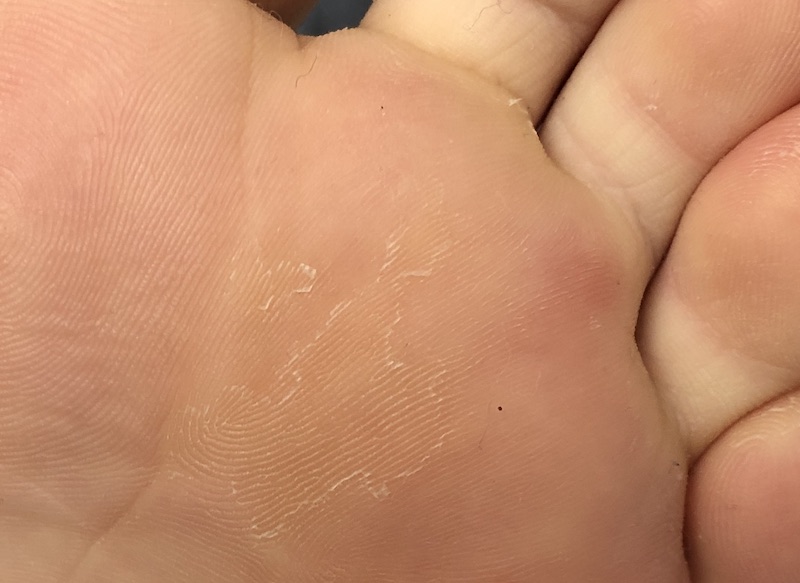I’ve had Raynaud’s for years. I think it may have started after I was pregnant with my children, but honestly, I can’t really remember. All I know is that my fingers turn white in the cold and that always made me laugh at how weird I was. But it wasn’t a big deal. It was only when my son was diagnosed, and I hadn’t seen it coming, that I started to look at the condition in more detail, and understand what Raynaud’s disease means for the people who have it.
Symptoms of Raynaud’s
Not everyone has the same Raynaud’s disease symptoms. The NHS website says it’s common, and doesn’t usually cause severe symptoms. Basically, Raynaud’s affects your blood circulation. When you’re cold, your fingers and toes may change colour. It can also happen when you’re stressed and anxious, which was news to me, and puts the whole thing in a different light.
This post contains affiliate links, which means I may make a small commission if you use them. There is no extra cost to you.
I developed the tell-tale Raynaud’s white finger problem in my early 40’s as a young mum, by which time I knew quite a few people who had similar symptoms, and didn’t see it as anything serious. I invested in some special gloves for Raynaud’s ( thick, warm gloves with a fleece lining), made sure I wore them more consistently, and warmed my hands on a mug of tea when I got home. (Be careful with this – it’s not advised to warm your hands up too quickly, and there’s a risk of burns if you do).
Heat Holders sell the best Raynaud’s disease gloves I’ve found. They do a range of styles and colours, including fingerless gloves (I know, it feels counter-intuitive but it’s not about warming the fingers, it’s about keeping the hands warm enough that your body doesn’t feel the need to take blood from the extremities – bear with me, I’ll explain further down). Similarly, they do good socks for Raynaud’s disease – thick but lightweight and still breathable, they’ve really helped with my son’s symptoms (see below).
My own gloves are a thick cable knit mitten, with fleece lining, and a finger cover section that can be buttoned back when I need to deal with the dog, or use my phone.
How Raynaud’s affects the feet
Of course, I knew that Raynaud’s could affect the toes too, and I’ve always had cold feet. But it wasn’t until my son was diagnosed that I realised that Raynaud’s on the feet can cause more serious problems than those I’ve experienced with my hands. Raynaud’s disease in feet can present very differently from the rest of the body, and without the white, blood-drained toes, I didn’t suspect that this was what was going on with my 14 year old. In fact, I was convinced that what he had was Covid toe – a rash across the top of the toes that doctors have noticed as part of the covid virus, especially in children. I was so convinced that I was happy with the GP’s phone assessment (lockdown having stopped in-person appointments) that he just needed a steroid cream to treat the intense itching and repair the skin.
To be fair to the GP, the steroid cream did the trick. But it kept coming back, more often in the winter months than summer, and it never crossed my mind that this was more than a surface-level rash. It was just frustrating. Eventually, after 3 or 4 more incidences, and some of the lesions on his toes looking a bit septic, I took him back to the GP. It turns out that Raynaud’s disease in toes causes recurrent chilblains, something which I’ve never experienced. These Raynaud’s disease feet pictures show the kind of thing you can expect:
The picture on the left shows what I now know to be recurrent chilblains. The middle picture is a close up, where you can see that one of the skin blemishes has become infected. The consultant told us this was his biggest concern – that the skin was starting to break down. Loss of blood flow to the feet caused by Raynaud’s can also cause flaky, peeling skin, as seen on the right. I was convinced this was Athlete’s foot, but it didn’t respond to the usual treatment, and he had no itchy, cracked skin between his toes.



How is Raynaud’s disease diagnosed?
First, the GP did some blood tests. One of Evan’s white blood cell tests came back slightly low, and this, coupled with his symptoms, plus a tendency to nosebleeds and a strange pinprick rash on his ankles, led her to refer him to a paediatric consultant to rule out possible vasculitis, a much more serious condition. He was triaged to Rheumatology, which of course set me off catastrophising. It was a nervous wait for his appointment, but the consultant put my mind at ease.
He did a full set of blood tests and checked for other obvious symptoms of a more serious illness, then explained that recurrent chilblains (and possibly the permanent pinprick rash on his ankles – in the absence of symptoms of Meningitis) were likely caused by loss of blood flow to his extremities in cold weather. Now, this didn’t make sense to me, because Evan constantly complains of being too hot, walks around barefoot in winter, and only wears a t-shirt when the rest of us are bundled up under several layers. But apparently, you don’t have to feel cold in order for the body to determine that you are.
Treatment for Raynaud’s disease
As I’ve already mentioned, your best bet for managing the symptoms and preventing a flare-up is to invest in good quality Raynaud’s gloves and socks. This is because, when the body decides it needs to protect vital organs by directing blood flow away from its peripheries, the feet and hands suffer, whether you’re feeling cold or not. He prescribed thermal socks to be worn at all times, and slippers in the house, to protect the feet from the effects of cold.
He also told us that the most important thing was to keep warm in general, to avoid the body making its diversionary tactics. Basically, if everyone else is wearing 4 layers in winter, he needs to as well, plus a warm coat (try telling that to a teenager)!
Medical treatments for Raynaud’s disease
Sometimes – especially when the skin is damaged – medical treatments are necessary. In Evan’s case, he was given a strong steroid cream called Betnovate, and instructions to use it twice a day for 3-4 days, until the rash was gone. He’s allowed to use it again, should it flare up in the future.
He was also given a prescription to take Nifedipine tablets for 14 days. These work by increasing blood flow so that the toes get plenty of circulation to help them heal. It’s not generally prescribed under the age of 18 but in our case, the consultant was concerned that his feet were in quite a bad way, and wanted to get it sorted. It worked well, but it can cause dizziness, as it lowers blood pressure. Again, he was told to use this medication as a one off in the future if he knew he was going to be standing around in the cold for a long time.
There are also options for natural treatments to help with Raynaud’s, including staying warm in your body. One of the best things I’ve found for preventing those chills on a wintery dog walk is a neck warmer. It stops the wind getting into my neck. And of course, wear a hat.
More tips for coping with Raynaud’s disease
I’ve done a bit of research and found a few more things that people claim have helped with their Raynaud’s symptoms. As always, please remember that I am not medically qualified; you should always seek the advice of a professional before trying any new treatment:
- Keep hands and feet moving with stretches and small exercises like scrunching and unclenching fingers and toes.
- Some vitamin and mineral deficiencies can make Raynaud’s worse. Get your GP to check for iron or magnesium deficiencies in particular.
- If thermal gloves and socks feel too thick, try cashmere. Cashmere bed socks keep feet warm at night, and fingerless gloves (remember, it’s about keeping the whole body warm, not just the fingers) can prevent cold hands when you’re working. Some people also swear by silver gloves; they work by helping to move heat from the hands to the fingers, or from the feet to the toes.
- On particularly cold days, when you know you’re going to be standing or sitting still in the cold, you might like to use a heat pad. Amazon sell stick-on single-use toe pads and hand warmers. This just prevents the extremities getting cold at all. They can be a bit uncomfortable to wear, but worth it inside wellies or snow boots. You can also buy usb-rechargeable heated insoles which last up to 8 hours, but they don’t get amazing reviews and are quite expensive.
- Homeopathy is also said to be helpful with increasing blood flow, and so reducing symptoms of Raynaud’s.
Is Raynaud’s disease autoimmune?
It’s not yet known what causes Raynaud’s, but can be secondary to other autoimmune conditions like scleroderma or lupus, so it’s important to go to a doctor if you suspect it.
How do you get Raynaud’s disease?
Again, it’s not known why the condition happens to some people and not others. However it does seem to cluster in families, which might indicate a hereditary, autoimmune connection.
Is Raynaud’s serious?
Primary Raynaud’s is not usually serious or progressive. However Raynaud’s can be secondary to more serious autoimmune conditions, so it’s important to get checked.
Can Raynaud’s disease be cured?
No. Like all autoimmune- related conditions, Raynaud’s disease cannot be cured. However, it’s not a bleak outlook. There are plenty of self-care options that reduce the symptoms, and if it is well managed it is unlikely to cause major damage. If in doubt, see your GP.



Thanks for sharing! I was diagnosed with Raynaud’s more than 40 years ago, being worst back then after a day of downhill skiing. I’ve learned to manage it, primarily by using means for preventing my extremities from getting cold. On days when my fingers become cold & painful using the computer mouse, I solve it by turning on my electric heated mouse pad cover. Natural wools like Alpaca have been great as sox and mitts.
A heated mouse cover! Never heard of that – I’ll have to research. My fingers are constantly cold at work.